Hi, what was the pre/apmli setup used for the review?
thank you!
MartinLogan ElectroMotion ESL Speaker System
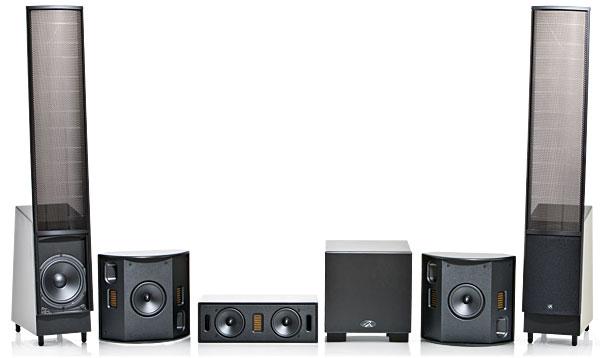
At A Glance: CLS Xstat electrostatic transducer • Folded Motion XT tweeter • Dipolar panels
I hate MartinLogan.
That’s right. I hate MartinLogan with a passion that borders on the obsessive. And there’s more to it than the fact that the company’s headquarters in Lawrence, Kansas, are just a hop, skip, and a third-and-long TD pass away from KU. (As a graduate of Mizzou, I say, “Pluck the Jayhawks.”) What gets me is that every time I see those tall, translucent, slightly curved, hard-to-believe-they-actually-work panels that are the hallmark of a MartinLogan electrostatic speaker, I want a pair. It wouldn’t matter if they sounded like a couple of used Kraco three-way 6-by-9 car speakers bought on eBay and left lying loose on the back dash of a rusted-out ’67 Chevy Impala. I’d still want them. They look so cool that I’ve always dreamed of having a pair—first (long ago) in my stereo system and then (now) in my home theater. I’ve been involved in this A/V business for an embarrassingly long time in a variety of capacities (and incapacities). While other speaker technologies and designs from my early days appear quaint and out of date, MartinLogan’s electrostatic speakers still look—to me, anyway—as cutting edge today as they did when I first encountered them some 20-odd years ago. Sadly, although I sold MartinLogan speakers to customers in a previous life, I’ve never had a pair to call my own. Thus, the deep hate-to-love-them emotional ambivalence.
Of course, not everyone is as enamored of the electrostatic look as I am. My daughter, for instance, thinks the new MartinLogan ElectroMotion ESL speakers ($2,195 per pair) look like baroque chairs and even sat on the woofer section to prove her point. My bio-chem engineer son and his physics-major girlfriend, on the other hand, think they look jaw-droppingly awesome. Pre- vious experiences have shown that’s pretty much the way it comes down. If you’re at all tech-oriented, you’re likely to drool over the speakers. Non-tech folk’s reactions typically run from, “Meh,” to, “You’re not putting those god-awful things in my living room.”
Electroanalysis
You’d think something called electrostatic would be the type of thing you’d want a good surge protector to defend yourself against. In the case of MartinLogan, electrostatic refers to the technology behind the transducer (speaker driver) that creates sound from—in the case of the new ElectroMotion ESL speakers—as low as 500 hertz all the way to 22,000 Hz. That’s an unusually broad range for a single driver. But what exactly is an electrostatic transducer, and how does it sound?
Essentially, an electrostatic transducer is made up of three main parts: the diaphragm, the stator, and the spacing spars. The diaphragm—the part of the speaker that moves back and forth to create sound—is really nothing more than a sheet of Saran Wrap. Well, not really. It’s a sheet of Saran Wrap that’s been impregnated with electrically conductive material. OK, it’s not Saran Wrap. It’s an ultra-light plastic material that’s super-thin. (And, no, it’s not Glad Cling Wrap, either.) It’s so thin that, were you to pluck a hair from your head (go ahead, I’ll wait), said hair would be eight times thicker (100 microns) than the diaphragm material’s 12-micron thickness. (MartinLogan says that generic kitchen cling wrap you bought at the dollar store is likely to be somewhere between 11 and 15 microns thick. So go out, get yourself some electrically conductive material, and impregnate your own diaphragm. Um, that didn’t sound good.) The diaphragm itself is so light, say the KU fans at MartinLogan, that the entire 34-by-8.6-inch swath of material is lighter than the air it moves.
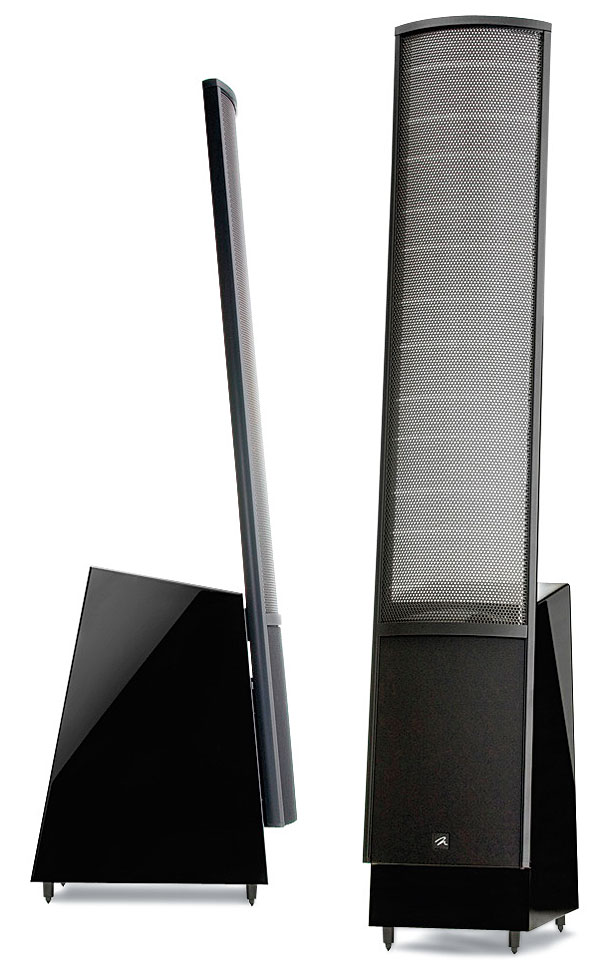
So it’s thinner than hair, lighter than air, and suspiciously electrically conductive. How do they get it to move? That’s where the stators come in. The stators are the part of a MartinLogan electrostat speaker that give it the signature high-tech/oh-yech look that I happen to hate to love. The two stators, one behind and one in front of the diaphragm material, are perforated steel sheets coated with an insulator. (That’s a letdown of a description, isn’t it?) A step-up transformer in the speaker converts your amp or A/V receiver’s speaker-level output into a pair of high-voltage signals that are opposite in polarity but equal in strength. Whereas the audio signal would run through a coil of wire suspended in a magnet to make the attached cone or dome driver move back and forth, the stators get alternately fired up with positive/negative or negative/positive charges. A change in the relative charges makes the diaphragm material with a fixed charge move forward and backward, which in turn compresses and rarefies the air and creates sound. The spacing spars are non-conductive strips that run horizontally across the diaphragm at regular intervals. These strips work to stiffen the entire panel so that only the diaphragm material moves. They also prevent the diaphragm material from coming too close to a stator. Of course, to make all this work, you have to plug the speaker into an electrical outlet, so be prepared to run a power cord as well as your speaker cable.
500 Hz Is a Long Way Down
Since the stators are perforated front and back, sound is dispersed forward and backward with equal intensity, but out of phase—in other words, the ElectroMotion ESL operates as a dipole. Because the panel is wide and thin, sound waves that radiate out to the sides of the front of the stators cancel out the out-of-phase sound produced by the back. Unlike a traditional speaker design, there’s not much of a front baffle to affect the output of the tweeter and midrange drivers.
Given enough surface area, you could make a full-range speaker out of a single electrostatic panel. But very few people (even me) would be willing to fit such large panels inside their house. With 129 square inches of sound-radiating surface (if you generously count both front and back), the ESL’s electrostatic panel can drive frequencies down to about 500 Hz. Below the panel, an 8-inch forward-firing cone woofer mounted in the cabinet with a down-firing port takes over from there. MartinLogan rates the ESL’s low-end output as extending down to 42 Hz. So while a subwoofer isn’t absolutely necessary, it definitely helps round out the bottom end—especially when it comes to home theater.
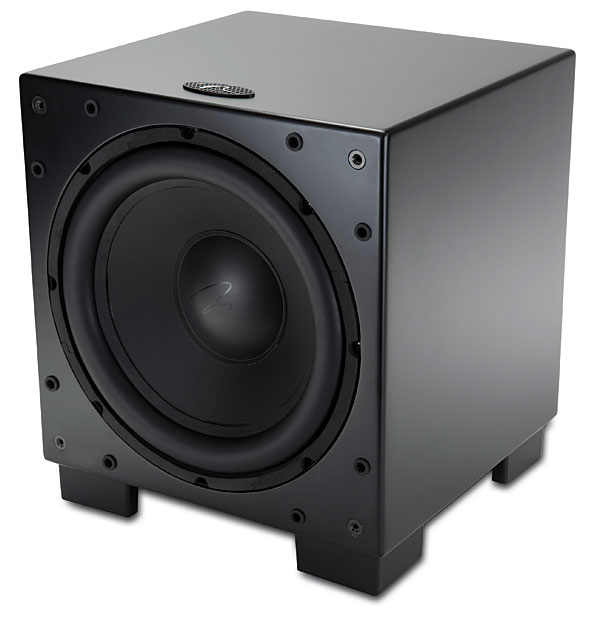
MartinLogan sent a 500-watt Dynamo 1000 ($995) subwoofer along with the EM ESLs. The Dynamo 1000 is unusual in several respects. For one, it’s convertible. You can use it in a downward-firing mode (the way it ships), or simply move the feet from the bottom of the sub cabinet to one of the sides and slap the included grille over the 12-inch driver to use it in a forward-firing configuration. Another out-of-the-ordinary feature is the sub’s built-in wireless receiver that you can use in conjunction with MartinLogan’s optional SWT-1 wireless transmitter ($120). The SWT-1 attaches to your AVR’s sub output and, using the magic of 2.4-gigahertz RF technology, sends an uncompressed, 16-bit/48-kilohertz signal to the Dynamo 1000. This low-down wireless capability means you can place the Dynamo 1000 in your room based on where it sounds best (as long as there’s a power outlet), not where it’s easiest to wire.
You’ve Got to Know When to Fold Them
The ideal EM ESL home theater system would use five of these beautiful electrostatic speakers (with a couple of Dynamo 1000s thrown in for good measure). But placing a 52-inch-tall tower, no matter how attractive and semi-transparent, in front of your HDTV would be a real impediment to enjoying the video part of your audio/video system. Unfortunately, you can’t simply lay an EM ESL down on its side and use it as a center channel. The much-beneficial narrow vertical dispersion of an upright EM ESL would then become much-detrimental narrow horizontal dispersion, which would play havoc with the sound. MartinLogan does make dedicated electrostatic center-channel speakers, but the least expensive, the Motif, starts at $1,895—just below the $2,195 cost of a pair of EM ESLs.
While the ElectroMotion ESLs are the least expensive electrostatic speakers MartinLogan makes, they’re not the least expensive speakers the company makes. A short while ago, MartinLogan introduced the Motion Series, which are less expensive (starting at $200 each) classic box-style speakers that use a combination of cone bass drivers and a relatively exotic folded-diaphragm tweeter. MartinLogan’s Folded Motion Tweeter uses a thin, flat membrane that’s been folded into pleats that look a little like the side of an accordion. Repeatedly pushing the pleats in together from the sides and pulling them apart squeezes out the air between the pleats and creates sound.
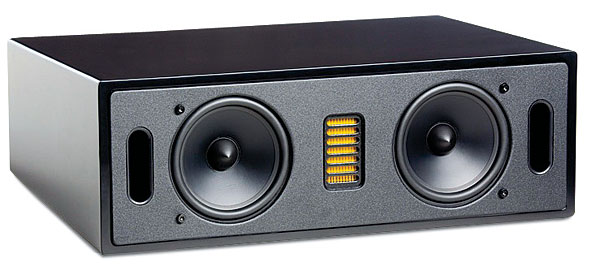
MartinLogan’s new ElectroMotion C2 center-channel speaker ($800) and ElectroMotion FX2 surround speakers ($650 each) use Folded Motion XT tweeters. The basic folded-diaphragm technology is the same as in MartinLogan’s original Folded Motion tweeter, but the XT versions are larger, with 40 percent more radiating surface area. The EM C2 has a single Folded Motion XT tweeter sandwiched between a pair of 5.25-inch fiber-cone woofers in a cabinet that MartinLogan says has dimensions similar to that of a typical AVR (approximately 19 inches wide, 6.5 inches tall, and 14 inches deep). It’s designed to fit discreetly in any standard A/V furniture you might have under your HDTV.
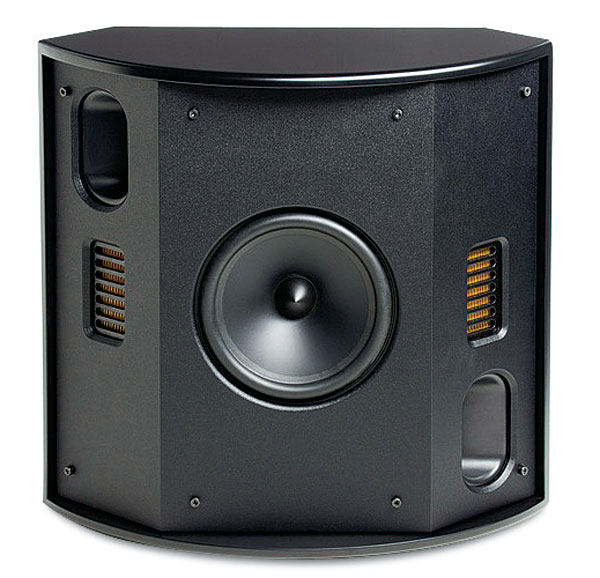
The EM FX2 surround, on the other hand, can’t really be described as discrete. Its 14-inch width and nearly 15-inch height—as well as 6.8 inches of depth at the center of the curved front grilles—makes it unmistakably part of an audio system when mounted on a flat wall. The EM FX2’s cabinet’s unique angled-back design makes it perfect for mounting in the corners of a room where it will tend to disappear into the woodwork. MartinLogan ships the EM FX2 with special brackets for corner mounting, as well as with a simple keyhole-mount on-wall bracket. (You have to be careful attaching the keyhole bracket to the wall, however, because it’s easy to crack the plastic, as I did on the first one, if you tighten the screws too tight.) Behind the curved black grille on the EM FX2’s ported cabinet is a 6.5-inch cone woofer flanked by two Folded Motion XT tweeters configured to perform as a wide-dispersion array with 160 degrees of horizontal dispersion.
Love Hertz
I mentioned earlier that my hate-to-love relationship with MartinLogan electrostatic speakers starts with their super-cool, see-through, “That’s a speaker?” looks. (It’s one of the few speaker designs that make people want to touch the speaker grille to see if it’s real.) And while I hyperbolized when I said I’d want them even if they sounded like a crappy car speaker, I fortunately don’t have to back up that claim because the ElectroMotion ESLs sound, well, fabulous.
- Log in or register to post comments


What was your set up for testing? I have this setup (Deftech Supercube II sub instead) and while it sounds great for movies, I feel it is lacking for two channel.





































































